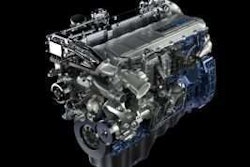If you provide engine service in your facilities, there’s a chance at some point a customer has asked you to modify his rig’s emission system.
While there’s no rule against asking, there are some pretty hefty violations associated with actually following through.
Tampering with emissions equipment is prohibited in the commercial vehicle industry. The Environmental Protection Agency (EPA) is vigilant in investigating and prosecuting fleets, truck owners and service facilities found violating emissions tampering rules.
The force of its punishments can be extreme.
According to EPA guidelines, service providers can be found liable for emissions tampering not only for altering an engine, emission and associated electrical system, but also for not reporting — to the EPA, vehicle owner or both — when evidence of tampering is found in during engine-related service work.
The risk associated with these rules has spurred the Technology and Maintenance Council (TMC) to create a task force in its S.16 Service Provider study group on emissions tampering.
Formed earlier this year, TMC’s task force hopes to build a recommended practice to educate service providers on the dangers of emissions tampering, and provide a course of action when encountering vehicles that have experienced emissions tampering.
The group held a panel discussion at TMC’s fall meeting earlier this month with representatives from Navistar, Cummins and the EPA.
Moderated by Task Force Chairman Peter Savage, operations manager at Clarke Power Services, the group addressed why emission tampering is illegal, the violations and possible punishments for tampering and how the industry can work together to remove it from marketplace.
While emission tampering isn’t a new problem, it is one that has grown recently with the rapid development of EPA emission regulations.
Bill Puchniarz, manager, inline field services at Navistar, says emission tampering qualifies as “anything that takes a vehicle out of its EPA/CARB certified state.”
Removing a DPF or blocking its usage within an emission system is one of the most common methods for engine tampering, Puchniarz says. Other methods include alternating the after treatment system and electrical modifications, such as increasing the amount of fuel that is delivered to an engine or programming that diesel exhaust fluid (DEF) is being used when it is not.
No matter what the strategy, it’s all illegal. It’s also surprisingly negative on the engine’s overall functionality, says Kevin Otto, director of service at Cummins Emissions Solutions.
“These modifications affect the reliability of the engine,” he says. “They don’t make things better.”
Adds Puchniarz: “[They] put warranty in question and shorten engine life.”
And how are you going to know if an engine or emission system has been altered?
Otto says some tampering is obvious.
If a truck comes in without a DPF you’re going to notice. Physical alterations to a DPF or EGR/SCR system also should be easy to spot, and a truck without a DEF nozzle is another clear indication.
Finding minor tweaks and electronic changes are harder to spot.
Puchniarz says new engines feature an onboard diagnostic system that can identify when other components have been altered. With older vehicles, it takes a little research.
Anne Wick, EPA engine and vehicle team leader, says several states have created tampering inspection programs and the EPA is working to create a comprehensive guide.
In the meantime, she warns service providers and techs to just be aware of what they see. When something looks wrong, it probably is.
TMC’s task force is progressing well but is still years from creating a valid RP, so the panel advises creating internal policies in your business now to deal with tampering.
Your policy doesn’t have to be expansive, but Otto says your employees need to know they can’t ignore tampering when they find some on the job.
“We need to be sure techs know exactly what to do if they encounter a vehicle that has been tampered with,” he says.










